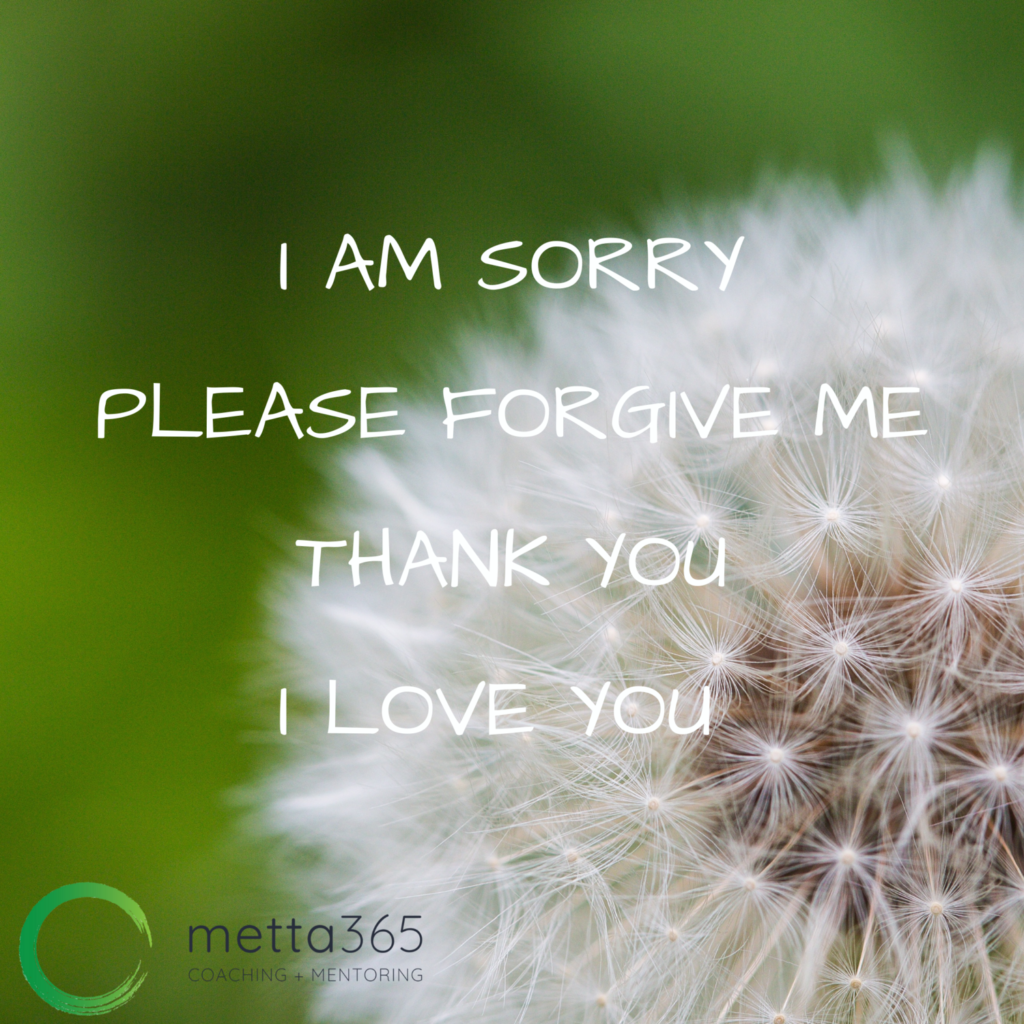Listen up, folks! We’ve got an intriguing topic to tackle today, one that might just blow your mind. We’re diving into the world of Ho’oponopono and asking the burning question: can this ancient practice be considered a form of meditation? Now, I know what you’re thinking – meditation is all about clearing your mind, finding inner peace, and tuning in to your breath. But, hold on tight because we’re about to challenge your preconceived notions.
In this article, we’ll explore the depths of Ho’oponopono, a Hawaiian practice of reconciliation and forgiveness, and unravel its connection to the meditative realm. We’ll embark on a journey through the origins and principles of Ho’oponopono, painting a vivid picture to understand how it operates. Brace yourself for a riveting exploration of the similarities and differences between meditation and Ho’oponopono, as we weigh the evidence and examine whether they can truly walk hand in hand. So, grab a cup of tea, find a cozy spot, and let’s get ready to unravel the enigma of Ho’oponopono’s relationship with meditation.

I. History and Origins
A. Overview of Ho’oponopono
Ho’oponopono is a spiritual practice that originated in ancient Hawaiian culture. The word “Ho’oponopono” can be broken down into two parts: “Ho’o” means to make and “Ponopono” means right. Therefore, it can be understood as “making things right.” It is a process of reconciliation and forgiveness that is aimed at restoring and harmonizing broken relationships, both with oneself and with others.
B. Origin of Ho’oponopono
Ho’oponopono has deep roots in Hawaiian tradition and was traditionally practiced by Hawaiian families to resolve conflicts and restore harmony. It was often facilitated by a respected elder or healer who guided the process of reconciliation and forgiveness. Over time, the practice has evolved, and today it is accessible to individuals who wish to embrace its principles.
C. Purpose and Principles
The main purpose of Ho’oponopono is to promote healing and reconciliation. It emphasizes taking responsibility for one’s actions, thoughts, and emotions, as these are believed to contribute to the disharmony and conflicts experienced in life. The principles of Ho’oponopono include acknowledging one’s role in the situation, expressing remorse and forgiveness, and seeking resolution through compassion and love.
II. Understanding Meditation
A. Definition of Meditation
Meditation is a practice that involves calming the mind and focusing one’s attention in order to achieve a state of mental clarity and emotional well-being. It has been practiced for thousands of years in various cultures and religions and is known for its numerous benefits on physical, mental, and spiritual health.
B. Benefits of Meditation
Meditation has been scientifically proven to have numerous benefits, both on a mental and physical level. It reduces stress and anxiety, improves concentration and memory, promotes emotional well-being, and enhances self-awareness. Regular meditation practice is also associated with improved sleep, decreased blood pressure, and increased immune function.
C. Types of Meditation
There are various types of meditation practices, each with its own unique techniques and focuses. Some of the most common types include mindfulness meditation, loving-kindness meditation, transcendental meditation, and guided visualization. These practices differ in their approaches but share the common goal of cultivating a state of inner peace and deep relaxation.
III. Similarities between Ho’oponopono and Meditation
A. Focus on Inner Healing and Self-Reflection
Both Ho’oponopono and meditation aim to promote inner healing and self-reflection. Both practices encourage individuals to look within themselves, acknowledge their emotions, thoughts, and beliefs, and work towards resolving any internal conflicts or disharmony. By focusing inward, practitioners can cultivate self-awareness and develop a deeper understanding of their own needs and desires.
B. Cultivating Mindfulness and Presence
Both Ho’oponopono and meditation emphasize the importance of mindfulness and presence. Mindfulness involves being fully present in the current moment, without judgment or attachment to the past or future. By practicing mindfulness, practitioners can develop a deeper connection with their surroundings and gain a greater appreciation for the present moment.
C. Creating a State of Relaxation and Calm
Both Ho’oponopono and meditation are known for their ability to create a state of relaxation and calm. Through the practice of deep breathing, visualization, and focusing techniques, both practices help individuals quiet their minds, release tension, and achieve a sense of tranquility. This state of relaxation promotes overall well-being and reduces stress and anxiety.
IV. Differences between Ho’oponopono and Meditation
A. Cultural and Spiritual Context
One of the main differences between Ho’oponopono and meditation lies in their cultural and spiritual contexts. Ho’oponopono is deeply rooted in Hawaiian culture and spirituality, reflecting the unique beliefs and practices of the indigenous people of Hawaii. On the other hand, meditation is a practice that can be found in various cultures and religions worldwide, each with its own distinct philosophies and traditions.
B. Techniques and Practices
While both Ho’oponopono and meditation involve introspection and self-reflection, they differ in their techniques and practices. Ho’oponopono often involves prayer and intention setting, as well as the repetition of forgiveness and healing mantras. Meditation, on the other hand, encompasses a wide range of techniques such as focused attention, open monitoring, or visualization. The specific techniques used in meditation may vary depending on the type and purpose of the practice.
C. External Involvement and Reliance
Ho’oponopono often involves seeking resolution and healing through external facilitation, such as the guidance of a respected elder or healer. It is considered a communal practice, where individuals come together to reconcile and heal within a group setting. On the other hand, meditation is a personal practice that can be done individually, without the need for external involvement. It relies solely on the individual’s own efforts to cultivate a state of inner peace and well-being.

V. The Process of Ho’oponopono as a Meditative Practice
A. Prayer and Intention Setting
In Ho’oponopono, the process begins with prayer and intention setting. Individuals express their desire for healing and reconciliation, both within themselves and in their relationships with others. This prayer serves as a way to focus and direct their energy towards the desired outcome.
B. Repetition and Mantra-like Chanting
A key aspect of Ho’oponopono is the repetition of forgiveness and healing mantras. These mantras are chanted or silently repeated to oneself, with the intention of releasing negative emotions, beliefs, and blockages. The repetition of mantras helps to create a meditative state of mind and strengthens the individual’s connection to their own inner healing power.
C. Visualizations and Imagery
Ho’oponopono often incorporates visualizations and imagery as a means of facilitating healing and reconciliation. Individuals are encouraged to visualize themselves and others in a state of forgiveness, love, and harmony. By visualizing the desired outcome, practitioners can strengthen their intention and create a powerful energetic shift within themselves.
VI. Case Studies and Experiences
A. Personal Accounts of Practitioners
Many individuals who have practiced Ho’oponopono have reported transformative experiences. They have shared personal accounts of finding healing and resolution in their relationships, as well as experiencing a greater sense of inner peace and well-being. These personal stories highlight the potential power of Ho’oponopono as a meditative practice.
B. Research Studies and Findings
While there is limited scientific research specifically focusing on Ho’oponopono, studies on related practices such as meditation and forgiveness have shown promising results. Research suggests that regular meditation practice can have a positive impact on mental health, emotional well-being, and relationship satisfaction. These findings provide indirect support for the potential benefits of Ho’oponopono as a meditative practice.
C. Comparison with Other Meditation Techniques
When comparing Ho’oponopono to other meditation techniques, it is important to acknowledge that each practice has its own unique benefits and applications. While Ho’oponopono may be particularly effective for healing relationships and promoting forgiveness, other meditation techniques may be more suited for stress reduction, focused attention, or spiritual connection. The choice of practice ultimately depends on individual preferences and desired outcomes.

VII. Criticisms and Controversies
A. Cultural Appropriation and Commercialization
Ho’oponopono, like many traditional practices, has faced criticism for cultural appropriation and commercialization. Some argue that the practice has been commodified and distorted to fit Western self-help narratives, thereby diluting its cultural and spiritual significance. It is important to approach Ho’oponopono with respect and awareness of its cultural roots.
B. Lack of Scientific Evidence
One of the main criticisms of Ho’oponopono is the lack of scientific evidence supporting its effectiveness. As a spiritual practice, it may be challenging to measure its outcomes using traditional scientific methods. However, anecdotal evidence and personal experiences suggest that Ho’oponopono can have powerful transformative effects on individuals who engage in the practice.
C. Potential for Psychological Harm
While Ho’oponopono can be a deeply healing practice, it is essential to approach it with caution and self-awareness. The process of releasing negative emotions and beliefs can sometimes bring up intense feelings or memories. It is advised to practice self-care and seek support if needed when engaging in any form of emotional healing or spiritual practice.
VIII. Integration of Ho’oponopono and Meditation Practices
A. Incorporating Ho’oponopono into Meditation Routines
For individuals who are already practicing meditation, incorporating Ho’oponopono techniques can deepen their meditation experience. By adding forgiveness mantras or visualizations of reconciliation to their existing practice, individuals can cultivate a greater sense of compassion, forgiveness, and inner peace.
B. Combining Techniques for Holistic Healing
Ho’oponopono can also be combined with other meditation techniques to create a holistic approach to healing and well-being. For example, integrating mindfulness meditation with Ho’oponopono can help individuals develop a non-judgmental awareness of their inner conflicts and then use forgiveness and reconciliation techniques to resolve them.
C. Finding Inner Peace and Resolution
Ultimately, the integration of Ho’oponopono and meditation practices can support individuals in finding inner peace and resolution. By cultivating self-awareness, focusing on forgiveness, and embracing a mindset of love and compassion, individuals can create a harmonious inner landscape that extends to their relationships with others.

IX. The Spiritual and Personal Growth Aspect
A. Connection to Higher Consciousness
Both Ho’oponopono and meditation practices provide an opportunity for individuals to connect with a higher consciousness or a greater sense of spirituality. Through the practices of forgiveness, self-reflection, and mindfulness, individuals can tap into a deeper understanding of themselves, others, and the interconnectedness of all beings.
B. Releasing Negative Emotions and Beliefs
Ho’oponopono and meditation practices offer methods for releasing negative emotions and beliefs that hinder personal growth and well-being. By acknowledging and letting go of these negative aspects, individuals can create space for positive transformation, allowing for personal growth and the cultivation of healthier thought patterns and beliefs.
C. Developing Compassion and Forgiveness
Both practices promote the development of compassion and forgiveness towards oneself and others. By recognizing one’s own imperfections and acknowledging the humanity in others, individuals can cultivate greater empathy and understanding. This, in turn, can lead to personal growth and more harmonious relationships.
X. Conclusion
A. Summary of Findings
Ho’oponopono can be considered a form of meditation that focuses on inner healing, self-reflection, and reconciliation. While it shares similarities with other meditation practices, it stands apart due to its unique cultural and spiritual context. The fusion of Ho’oponopono techniques with meditation practices can support individuals in their journey towards personal growth and overall well-being.
B. Reflecting on the Question
After exploring the history, techniques, benefits, and controversies surrounding Ho’oponopono as a form of meditation, we can conclude that it can indeed be considered a form of meditation. However, it is important to approach the practice with cultural sensitivity, respect, and an understanding of its traditional roots.
C. Encouragement for Further Exploration
If you are interested in incorporating Ho’oponopono into your meditation practice or exploring it as a standalone practice, it is recommended to seek guidance from respected teachers or practitioners. By delving deeper into its principles and techniques, you can embark on a transformative journey towards healing, forgiveness, and inner peace.

